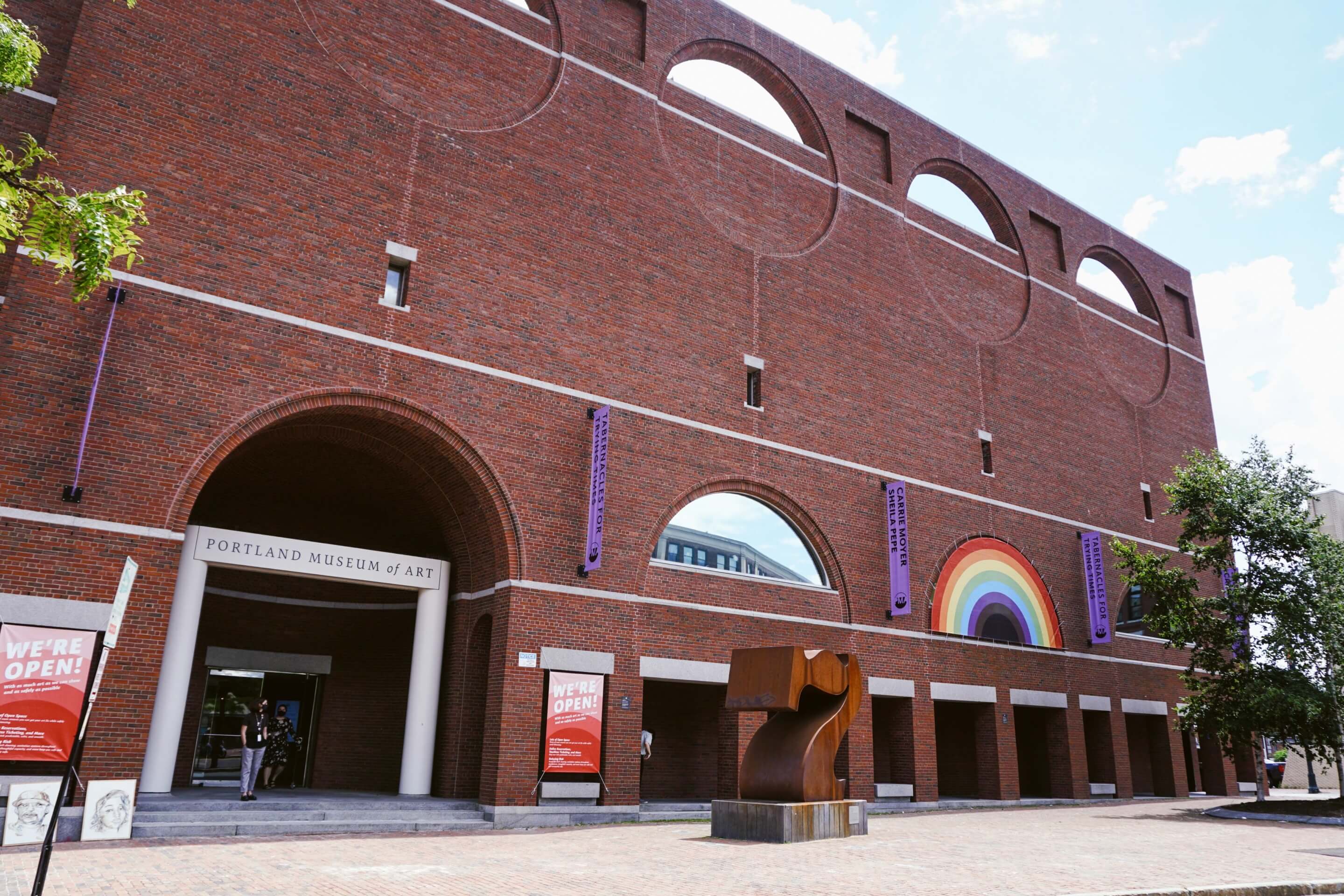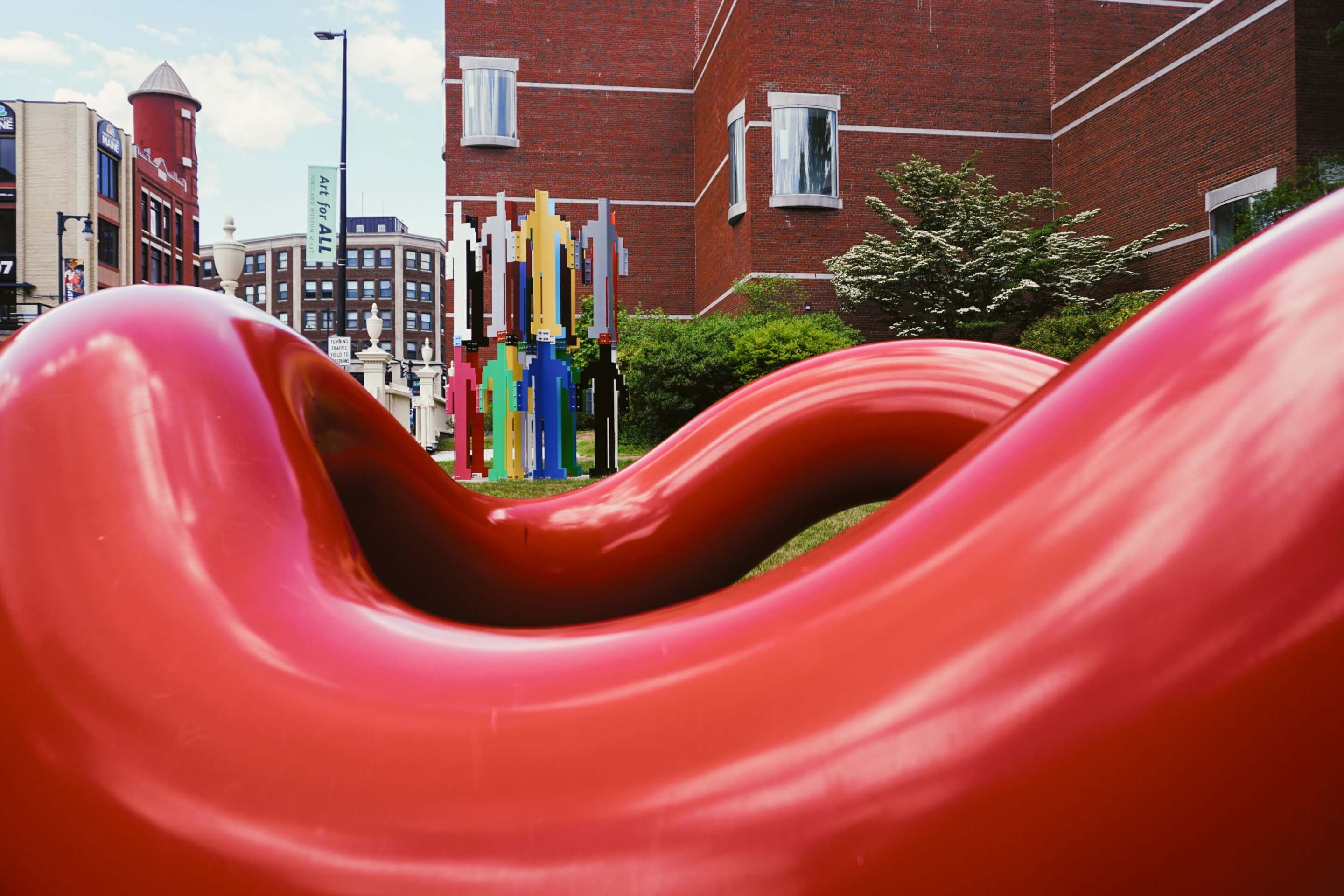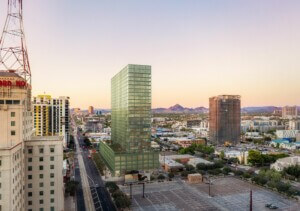The Portland Museum of Art (PMA), Maine’s oldest and largest public art institution, has revealed a powerhouse shortlist of domestic and international architecture firms vying to helm a planned expansion project that, when complete, will see the 140-year-old museum’s Congress Square campus more than double in size. The contending firms include: Adjaye Associates, MVRDV, LEVER Architecture, and a team co-led by Toshiko Mori Architect, Johnston Marklee, and Preston Scott Cohen.
Based in Cambridge, Massachusetts, Preston Scott Cohen’s eponymous architecture studio is the sole New England-based firm to lead one of the four shortlisted design teams (the full team lineups can be found at the end of this article) with LEVER Architecture representing the other Portland. Except for New York City–based Toshiko Mori Architect, designer of the new Center for Maine Contemporary Art in Rockland, none of the team-leading firms have designed previous projects in the Pine Tree State.
The four listed teams were selected via an open international competition, the Campus Unification + Expansion International Design Competition, which was developed and led by Dovetail Design Strategists in partnership with PMA. The competition formally launched in June with an RFQ release. As noted by the PMA in a press announcement, 104 teams submitted qualifications with more than 250 firms from across the globe participating. Thirty percent of the leading architecture firms were BIPOC-founded or -owned and 16 percent were founded or owned by women.
As noted by the PMA, participating teams were “required to demonstrate an understanding of the challenge, dedication to the museum’s ideals, relevant work, and to illustrate ‘In what ways can a museum’s architecture promote equity?’”
“We are deeply moved by the diversity of experience and records of innovation represented in these submissions,” said Mark H.C. Bessire, the Judy and Leonard Lauder Director of the Portland Museum of Art, in a statement. “Our aspirations as a cultural institution are far greater than simply ‘building a building’, and when we launched the competition, we were curious to see if our colleagues in the architectural world were equally interested in the paradigm shift we were imagining. Turns out, they were.”

With Stage II of the competition now underway, the four shortlisted teams will submit their design concepts this fall with a public display and comment period to follow in early winter. The teams’ final presentations to the public and competition jury is slated for the first half of December with the winning team expected to be announced later that month. Key dates and information about the competition jury can be found here.
Earlier this year, PMA first announced its PMA Blueprint: Building A Landmark For The Future project, which involves the construction of a new museum building in its first phase and a second phase that entails the unification of PMA’s four existing buildings, with the largest and newest being Pei Cobb Freed & Partners’ Charles Shipman Payson Building. The completion of the brick-clad Payson Building in 1983 marked the last time that the museum expanded the footprint of its downtown Portland campus. PMA’s forthcoming new wing will rise at a site located directly adjacent to the Payson Building at 142 Front Street, home to the former Chamber of Commerce Building. PMA acquired the nearly 200-year-old structure in 2019 after its last occupant, the Children’s Museum & Theatre of Maine, decamped to a new space at Portland’s waterfront Thompson Point Development.
The footprint of the current campus spans just under 40,000 square feet across all four buildings and will emerge from the expansion project at roughly 100,000 square feet. In addition to the Payson Building, the three other existing PMA buildings include the Clapp House (1832) at 97 Spring Street, the National Historic Landmark–designated McLellan-Sweat Mansion (completed in 1801 and significantly restored in 2002), and the Sweat Memorial Galleries (1911). These historic structures will be renovated as part of the campus unification effort to create an “inclusive and iconic landmark for the future.”

Set to rise six or seven stories, the new wing will “anchor and integrate the entire campus and double the institution’s existing size,” the PMA detailed. “It will be an environmentally and ecologically responsible expansion that will accommodate new collections and major exhibitions, host community events, programs, and performance space for the seeing and making of art, and will consolidate all staff offices.”
Among other elements, the program of the enlarged and revamped campus is set to include: a rooftop sculpture park and restaurant, a new gallery space for temporary exhibitions, a dedicated performance space, classrooms, a photography center, an event venue, a studio/makerspace, and gathering area and workspace for the community. In addition to the aforementioned new offices for PMA staffers, other back-of-house features are set to include a commercial grade kitchen and and service/area loading dock. Landscape upgrades are also part of the plan.
To finance the campus expansion and unification project, the PMA launched the $100 million (initially $85 million) Blueprint capital campaign; $30 million has been raised so far, as reported by the Portland Press Herald. Guided by the mission of Art For All, PMA boasts a collection of 180,000 objects, with a majority of these works being held in storage due to current space constraints. The Blueprint project will not only enable the museum to exhibit more of its sizable collection at once but is also set to boost visitor numbers to an anticipated 300,000–500,000 visitors annually.
The new wing is slated for completion in 2026.
The full shortlisted design teams are:
Adjaye Associates with KMA, Michael Boucher Landscape Architecture, Atelier Ten, and 2×4
LEVER Architecture with Unknown Studio, Chris Newell – Akomawt Educational Initiative, Openbox, Once-Future Office, Atelier Ten, and Studio Pacifica
MVRDV with STOSS, the Institute for Human Centered Design, Pentagram, Atelier Ten, and DVDL
Toshiko Mori Architect + Johnston Marklee + Preston Scott Cohen with Hargreaves Jones, Cross Cultural Community Services, WeShouldDoItAll, Buro Happold Consulting Engineers, and Arup
Local architects of record have not yet been tapped by each respective team—that process is part of the competition’s second stage.
AN will report back in December when the winning team has been announced.











